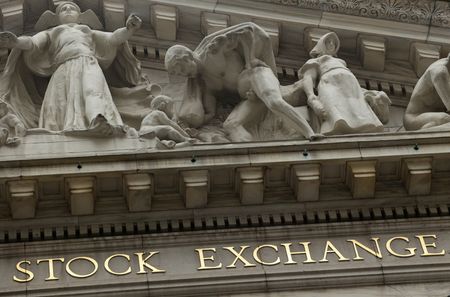A look at the day ahead in U.S. and global markets from Mike Dolan.
With one eye on the U.S. employment report at the end of a dour week of rising interest rates, world markets were spurred by another slightly mysterious Chinese stock surge.
For the third time in little over a week, Chinese and Hong Kong stocks jumped sharply from the depths of their dire year on a variety of sketchy reports and vague hopes that the country may soon ease its draconian economy-sapping zero-COVID curbs. None of these reports have yet been confirmed, but some former officials appeared to encourage the speculation on Friday.
Some investors clearly took it seriously. The Hang Seng surged 7%, and was headed for a weekly gain of more than 10% for the first time since November 2011. The Shanghai Composite rose 2.7% and was headed for a 5.6% weekly gain, the largest in more than two years.
The sudden surge was helped by reports that initial U.S. inspections of audit papers at U.S.-listed Chinese companies – a long-running point of regulatory tension and risk – finished ahead of time. Others pointed to the visit to Beijing of Germany’s Chancellor Olaf Scholz and Chinese President Xi Jinping on Friday touted the need for greater cooperation between China and Germany amid “times of change and turmoil”.
As a measure of how important a COVID rule change might be, UK hedge fund firm Man Group said it plans to expand in China after the country eases its strict curbs. But that’s far from consensus – the Wall Street Journal reported on Thursday that Tiger Global Management has paused investing in Chinese equities after Xi cemented his grip on power last month.
U.S. stock futures were up marginally ahead of the open, however, after another round of heavy index losses on rising interest rate fears on Thursday.
The October U.S. jobs report would be another key ingredient in assessing just how hawkish the Federal Reserve plans to be next year. U.S. employers likely hired another 200,000 workers last month, even thought that would be the fewest in nearly two years in October and wages likely increased at a moderate pace.
The bumpy earnings season for Big Tech continued to throw up negative surprises. PayPal shares fell more than 10% after the bell on Thursday after the online payments firm cut revenue growth forecast in anticipation of an economic downturn and saw little e-commerce growth in the holiday quarter.
And not all in the labor market is rosy. Twitter will tell employees by email on Friday about whether they have been laid off, temporarily closing its offices and preventing staff access, following a week of uncertainty about the company’s future under new owner Elon Musk.
Sterling recovered some ground after its biggest one-day loss on Thursday since the botched British budget in late September sent it to all-time lows. The Bank of England accompanied its biggest interest rate rise in 33 years by an insistence that markets overestimated how high it would raise rates next year, an implied policy rate peak that it said would sink the economy into its longest recession on record.
Elsewhere, the Group of Seven rich nations and Australia have agreed to set a fixed price when they finalize a price cap on Russian oil later this month, rather than adopting a floating rate, sources said on Thursday.
Key developments that should provide more direction to U.S. markets later on Friday:
* Boston Fed President Susan Collins speaks
* U.S. Oct employment report, Canada Oct employment report,
* U.S. Corporate Earnings: Hershey, Dominion Energy, Duke Energy, Cardinal Health, PPL, Cboe Global Markets, Evergy, AES
Graphic: China stocks – https://fingfx.thomsonreuters.com/gfx/mkt/gdpzqreolvw/One.PNG
Graphic: Unemployed to job openings More jobs than jobseekers – https://graphics.reuters.com/USA-FED/JOBS/egvbkmeoepq/chart.png
Graphic: Post-midterm perfection for U.S. stocks – https://graphics.reuters.com/USA-STOCKS/MIDTERMS/gdpzqrdoqvw/chart.png
(By Mike Dolan, editing by Ana Nicolaci da Costa; [email protected]. Twitter: @reutersMikeD)

